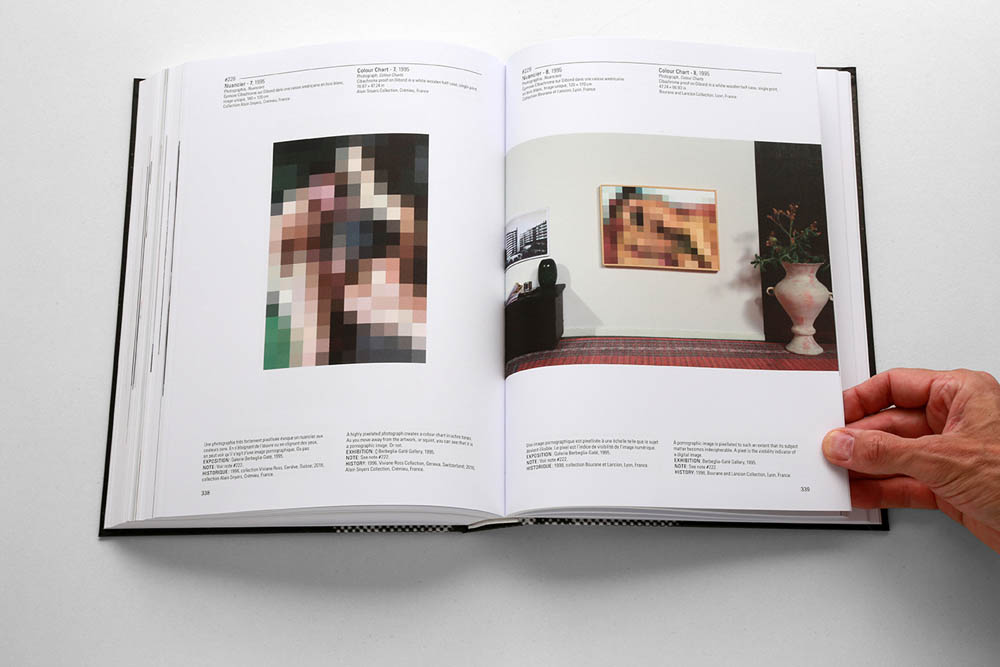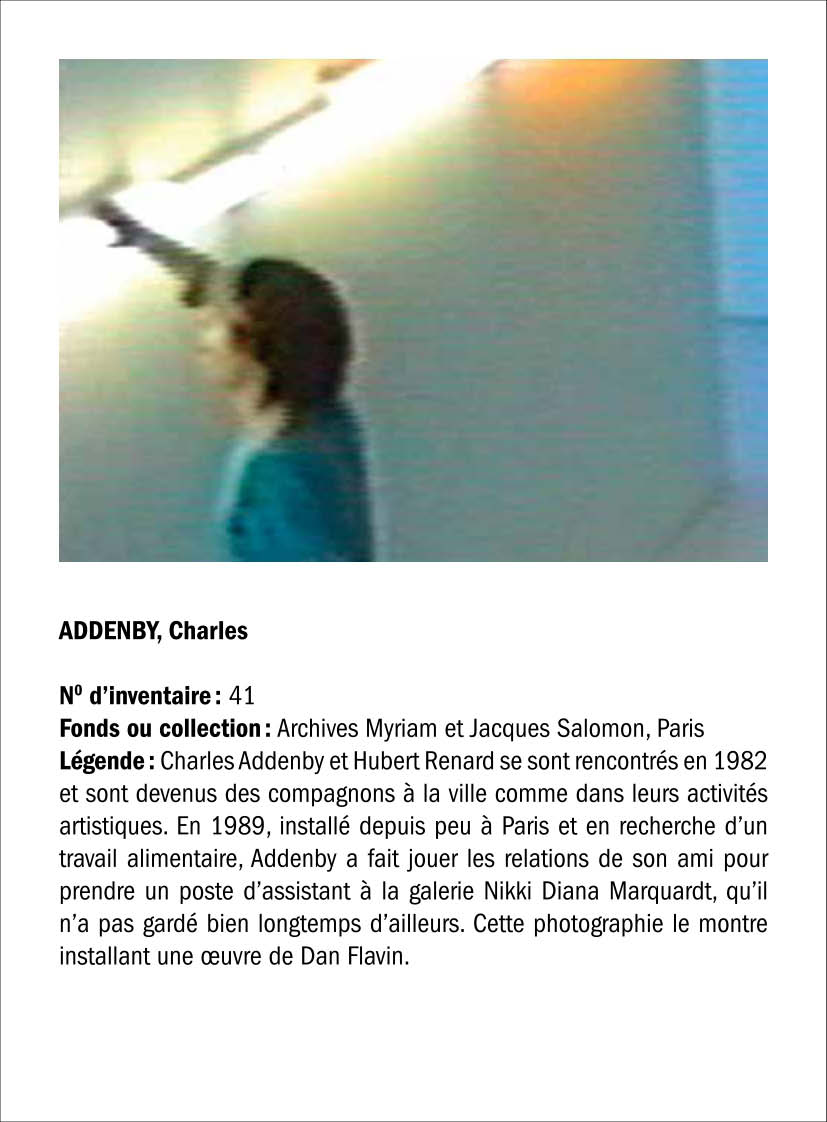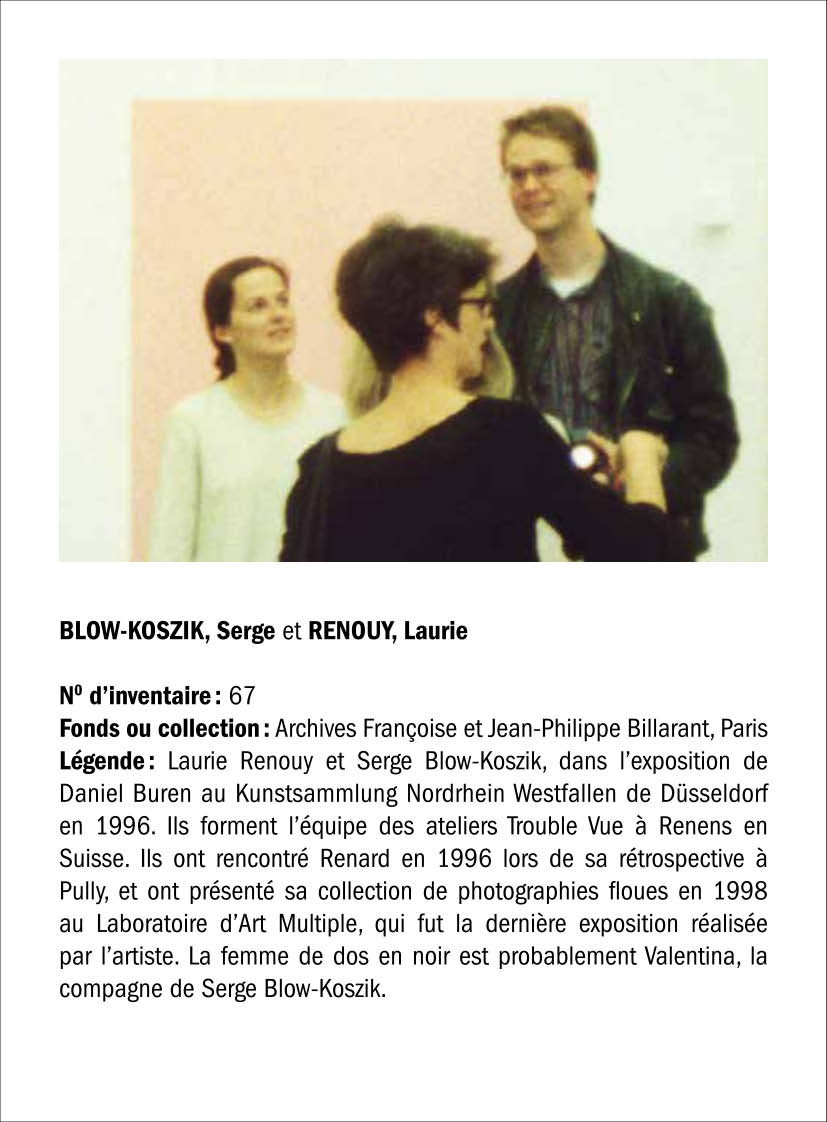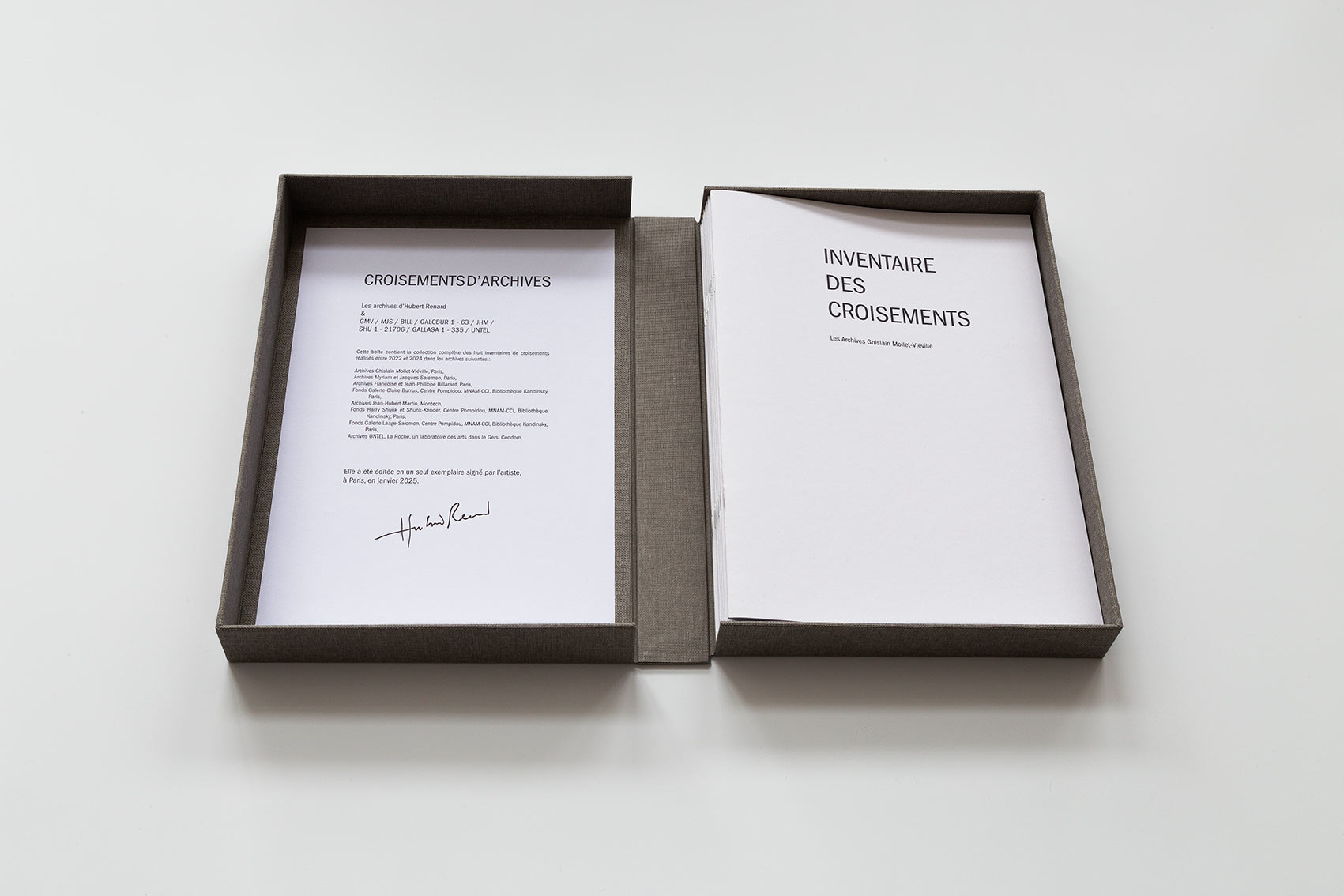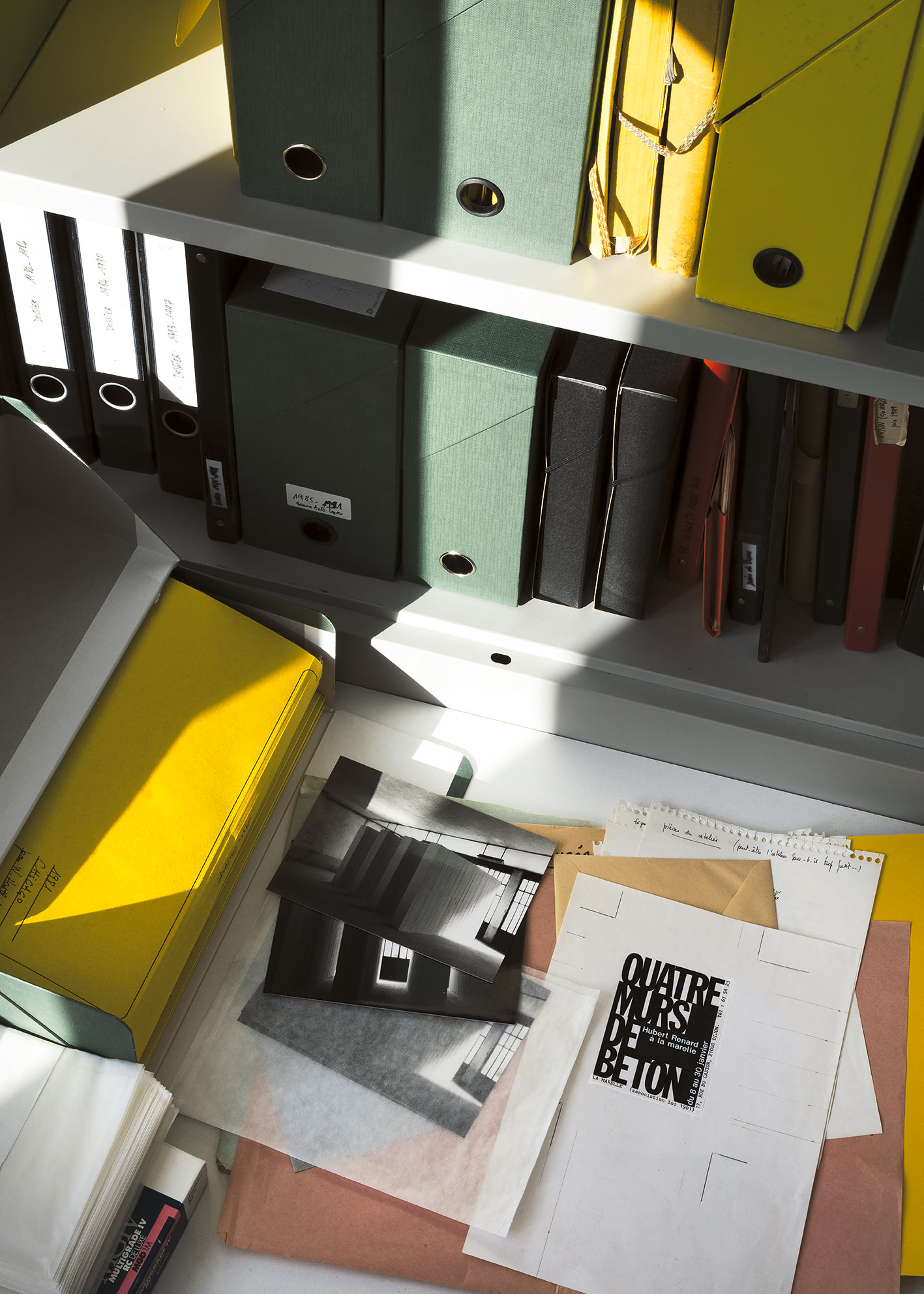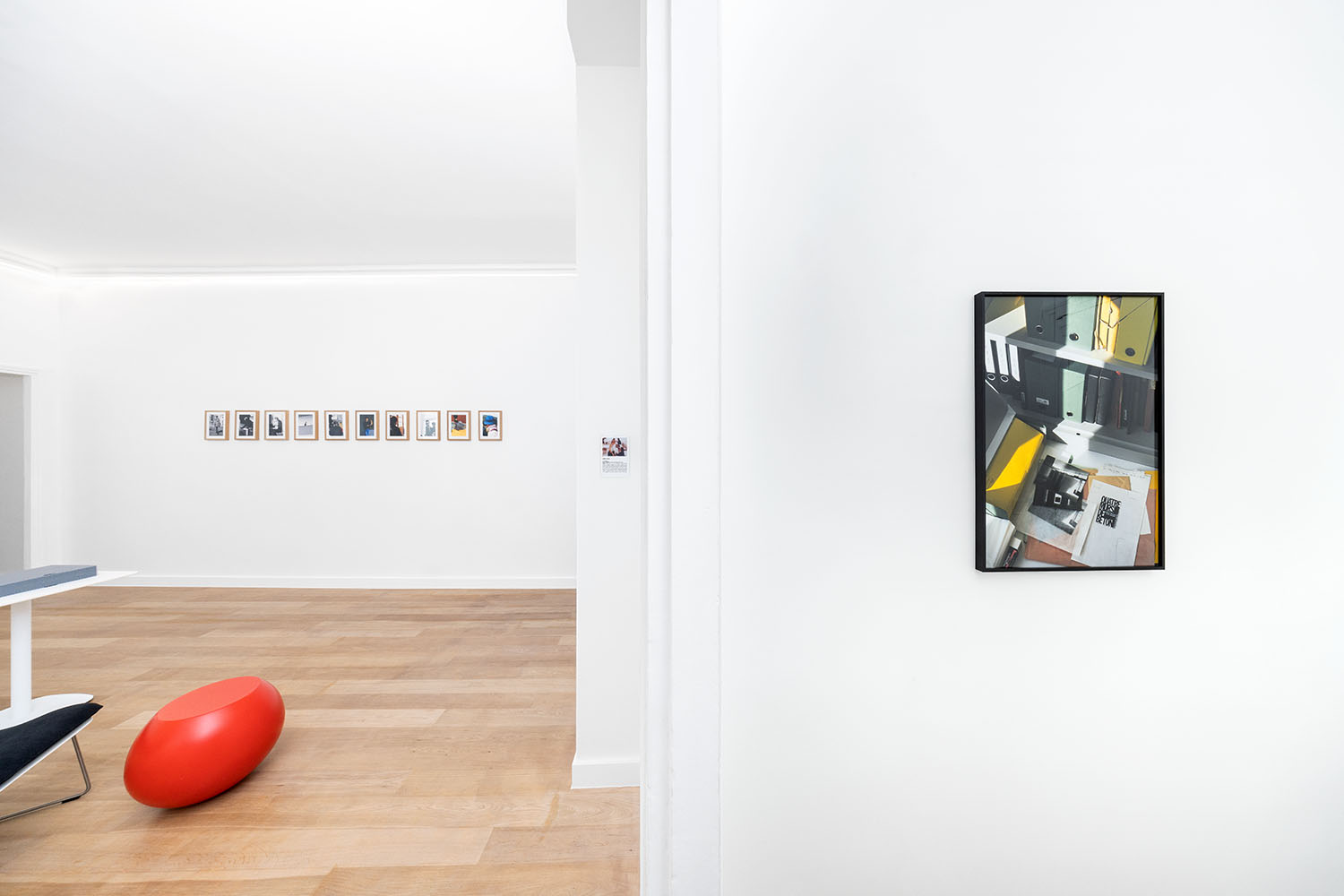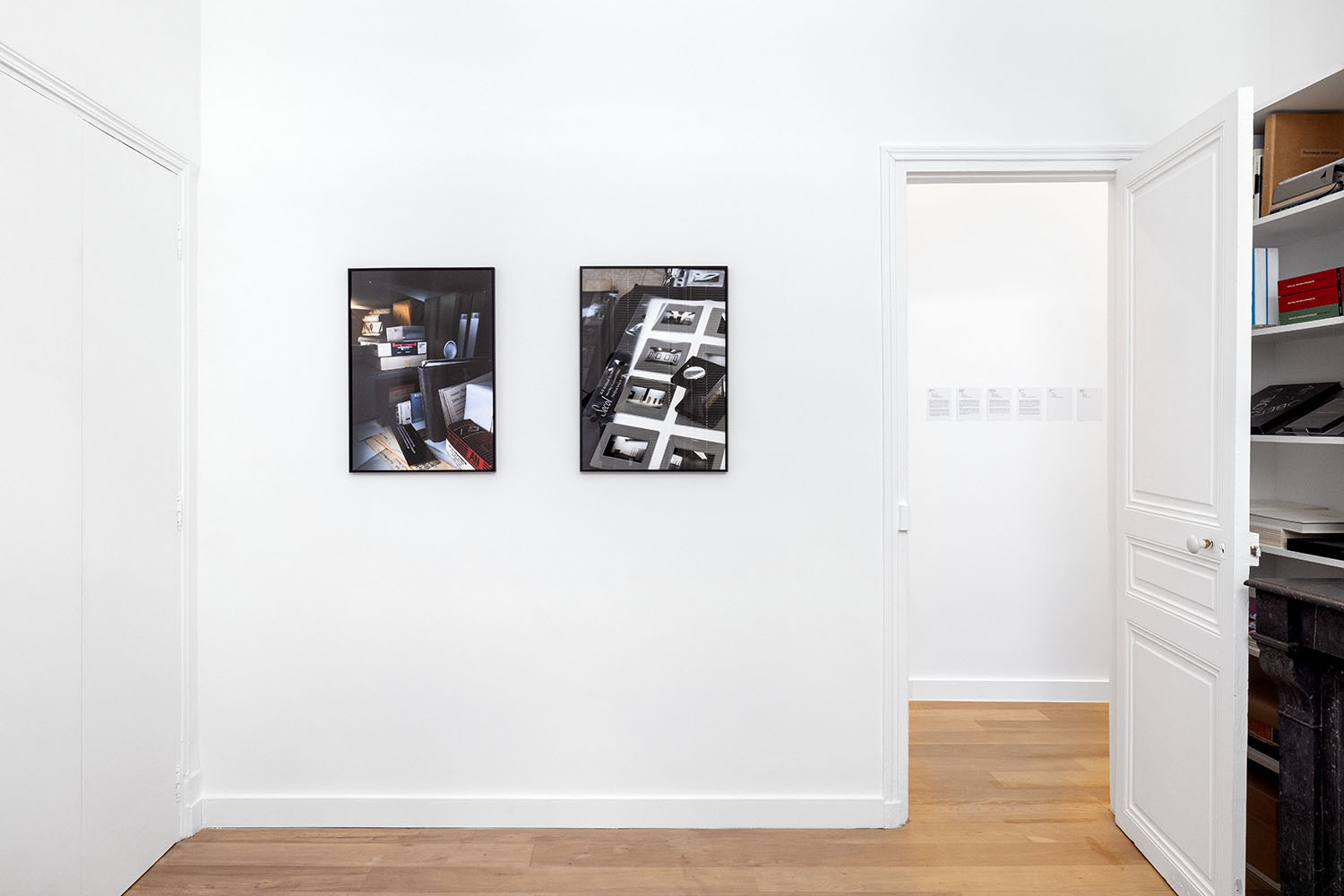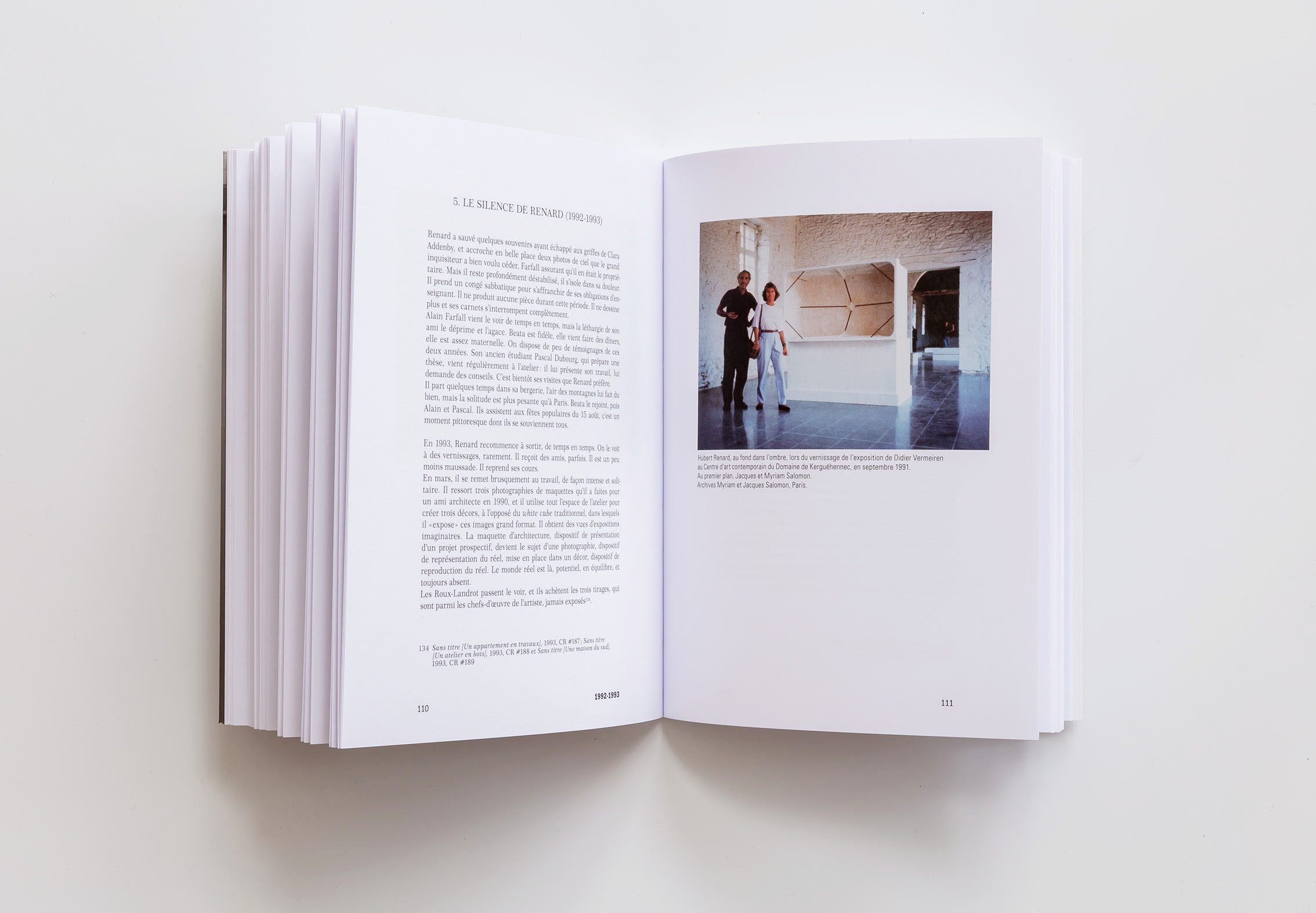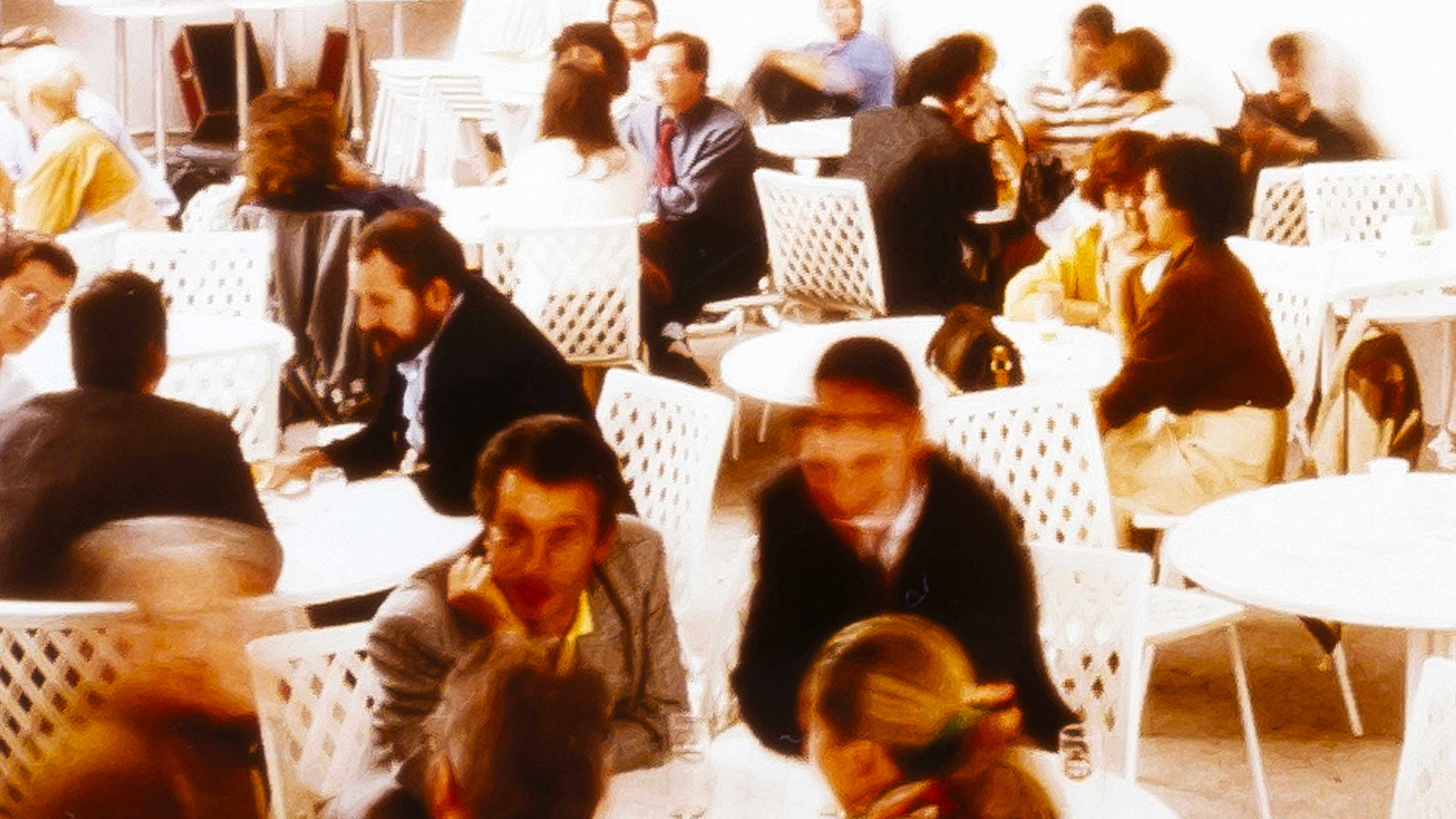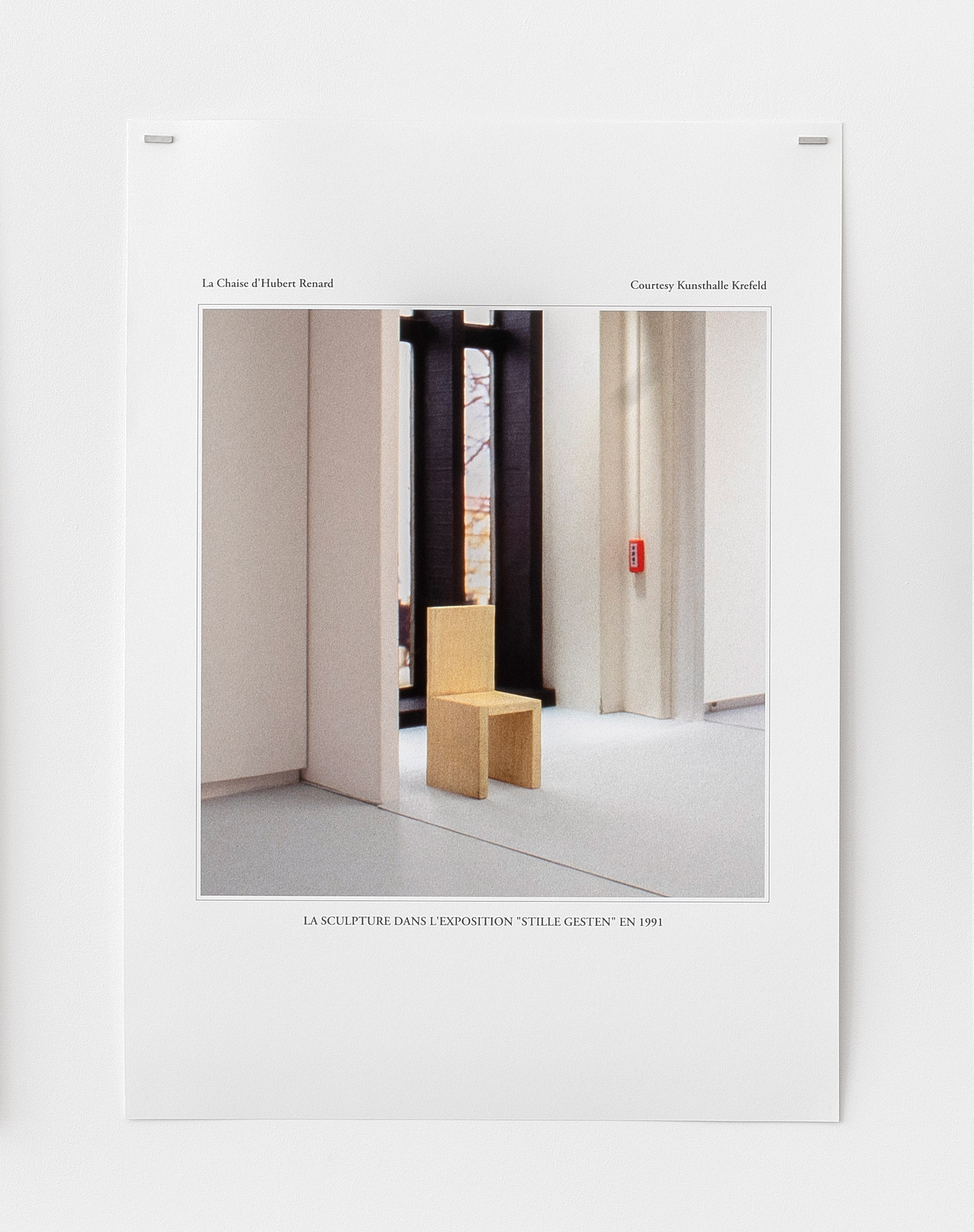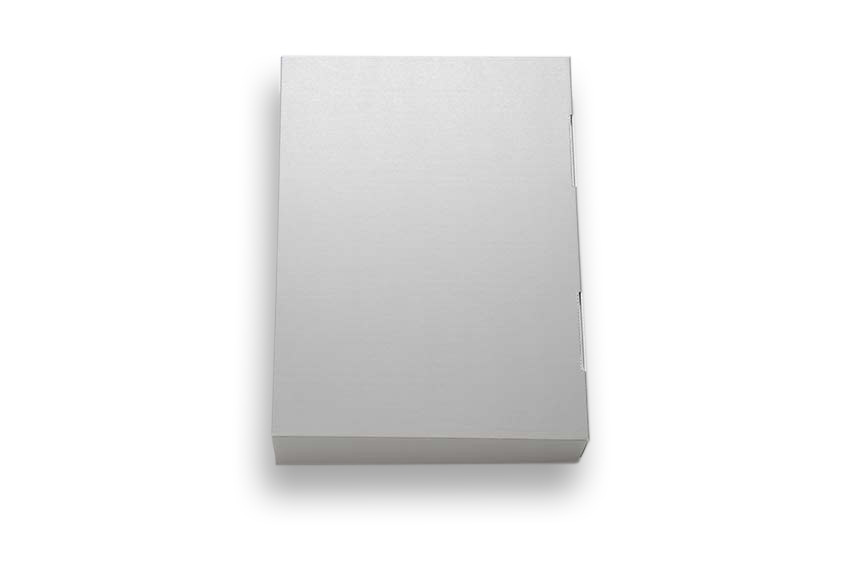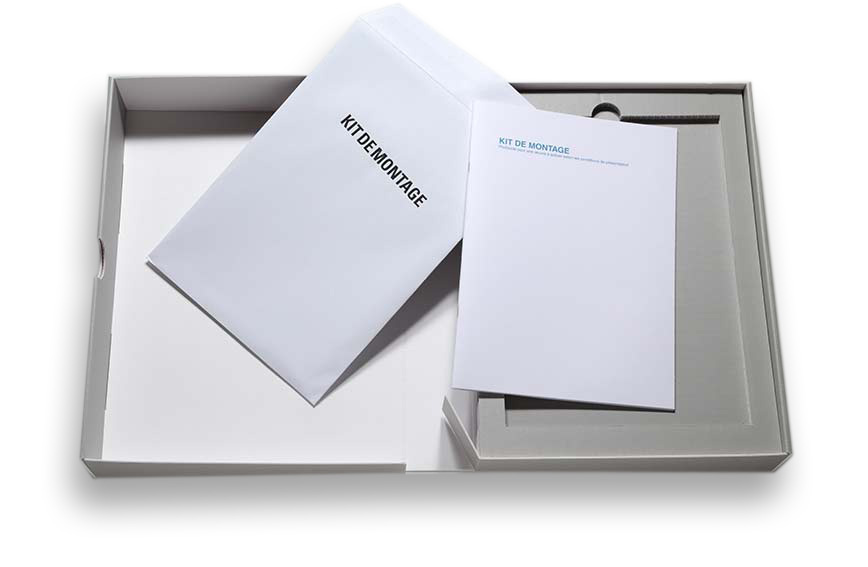Hubert Renard Catalogue raisonné, 1969-1998 (softcover), 2021
Specifications
Book, 30 x 22 cm, 420 pages
Texts by Alain Farfall and Marion Gagneure
Bilingual French-English
Translated in English by Aimée Van Vliet
Four-color offset printing on demi-mat coated paper 135g
Signatures are double-stitched with cotton thread
Production
Edition of 200 softcover copies and 50 numbered and signed hardcover copies
Produced and published by mfc-michèle didier in 2021
©2021 Hubert Renard and mfc-michèle didier
NB: All rights reserved. No part of this edition may be reproduced in any form or by any means without written permission from the author and the publisher.
The work of Hubert Renard is ubiquitous in the sense that it exists simultaneously at different moments in time, in the different periods in which it is inscribed, but also through the different facets of his person and the reflection it sets up. Like Schrodinger's cat, his work is both dead and alive, in progress and yet finished, and the presence of the artist himself is often manifested... by his absence.
In a sense, one could say that it is based on the classical aesthetic bases of "re-presentation", constantly playing on the trouble of the disappearance and appearance of its subject, where the artist, the work and its model are confused.
Introductory note by Alain Farfall, the author
"Hubert Renard focuses his attention on the artwork's condition of being in the world, starting from its material structure and its constants, producing varied projects on the work of art in the age of its technological reproducibility. He then turned to the manipulation of the press, the use of photography and brings together various autonomous artworks to create installations within the museum space, which became his trademark, so to speak. Whether he is exploring or questioning, Hubert Renard is constantly weighing up the stereotypes surrounding the artist and the artefact, the commentator and the viewer, the institution and the alternative space.
At the opposite extreme from Une monographie's fertile disorder, the catalogue raisonné's chronological order and nominal approach mean that this publication should not be seen as a faithful emanation of Renard's gesture in book form. Taken separately from the rest of his work, the artworks here crystallise succession, direction and structural and chronological developments. The artist's career becomes an enumeration of specific objects, step by step. However, as we shall see, the peculiarities of the catalogue raisonné not only reveal the characteristics of the artist's work, but constitute an unprecedented analysis, an extraordinary review, confirming not only that this exploratory tool was necessary to his work, but that it in fact constitutes an essential reference framework.
But what is a catalogue raisonné? It is the presentation of the work of an artist, by categorising their complete works rather than telling the story of their evolution, in a synchronic, not diachronic mode. An inventory of their work, used by professionals in the art world: museum curators and their assistants, cultural administrators, historians, gallery owners and commissioning officers, collectors, critics, agents, restorers, patrons, teachers, experts, documentarians and all of their interns.
Generally speaking, the catalogue raisonné may be useful to any fan of an artist's work, providing them with a complete and organised overview, or to provide some access to pieces that are often scattered around the world, sometimes inaccessible because they are stored in private collections, or because they have never left the artist's studio or been reproduced anywhere, to discover detailed information or significant anecdotes. However, it should be noted that the catalogue raisonné has met with only limited success among the general public, and it is a good idea to ask why that is."
"This catalogue raisonné is the first complete inventory of the works of Hubert Renard, between 1969 and 1998. We have included all finished works, paintings, sculptures, installations, unique or multiple pieces, with the exception of unpublished photographs (that the artist keeps in archive boxes) and drawings–which still need to be inventoried for a catalogue raisonné. Two artist's books have been counted as works of art in the present catalogue (#129 and #241), while other books are listed in the bibliography. Compiling this catalogue raisonné was complicated by the absence of a foundation or central archive dedicated to this work. The artist's archives, although prolific, are unfortunately in a state of disrepair and disarray, which made it particularly difficult, sometimes even problematic to use. We have done our best to make the work of registering his oeuvre complete, methodical and rigorous."
(Excerpt of the liminary notes by Marion Gagneure)
The catalogue raisonné documents all the work produced between 1969 and 1998, and indicates a certain amount of information for each work classified as follows: numbering, title, year, medium, series, materials/technology/edition, format, collection, description, exhibitions, bibliography, notes and history.
This rational and methodical approach makes possible to perceive trends and a number of series that reveal the artist's interest and are significant of the major debates stirring the 20th century art scene: minimalism, realism, support/surface, art/design, paint/photography, conceptual art and tautology, abstraction and figuration, modernity and post-modernism.
Hubert Renard's work has the peculiarity to not be so peculiar in itself. It might not exist, many equilavent works would exist all the same, so much so that it seems to borrow from a bunch of generic forms and gimmicks, which may evoke the many first contemporary art exhibitions organized by the FRAC since the early 1980s.
Hubert Renard's work is an archetypal and potential work, a work reflecting the zeitgest in its form and in its uses, and whose the catalogue raisonné is then itself a gesture.
This effect of critical distancing and replication is due to the fact that Hubert Renard is twice an artist. His practice led him very early on to create a döppleganger, an homonymous alter-ego. A few years older and an artist too, he only exist in a bygone present, existing by works made in models and documented, in a form of total artwork.
At the center of his œuvre, is therefore the real works but also the legend that surrounds the artist with his anecdotes, fake or not, his real or supposed originality, as well as his authenticity.
He has moreover inserted in the text a number of remarks, sometimes passing for shells, humorous traits or "inappropriate" comments, sometimes seeming to position it as external to his work.
Since the creation of this double, Hubert Renard has managed to make him real, to embody him in a form of reality. He has built a whole set of proofs and hints of his existence, by creating around him a whole institutional and commercial network, facsimile and real : works, critics, galleries or collectors, and so many clues, mirroring the way in which an artist builds his legitimacy. The catalogue raisonné will here bring a major contribution establishing his own canon.
Beyond the documentation of the work, the project refers to the question of the construction of contemporary myths that are a major part of art history, and also refers to the manipulation of history in general. Initially accepted as continuous and linear, history appears even more today as a perspective, a process constantly subjected to critical rereading but also an attempts to manipulate conscious or unconscious opinion with propaganda, rumors, fake news and retroactive continuity.
7.48 x 5.51 in ( 19 x 14 cm )
11.81 x 8.66 x 1.57 in ( 30,5 x 22,3 x 4,1 cm )
14.17 x 11.81 x 2.36 in ( 36 x 30,4 x 6,8 cm )
11.81 x 9.45 in ( 30 x 24 cm )
27.56 x 19.69 in ( 70 x 50 cm )
27.56 x 19.69 in ( 70 x 50 cm )
27.56 x 19.69 in ( 70 x 50 cm )
8.66 x 6.3 in ( 22,5 x 16,5 cm )
11.81 x 8.66 in ( 30 x 22 cm )
27.56 x 19.69 in ( 70 x 50 cm )
27.56 x 19.69 in ( 70 x 50 cm )
27.56 x 19.69 in ( 70 x 50 cm )
27.56 x 19.69 in ( 70 x 50 cm )
Each 27.56 x 19.69 in
Variable dimensions
Each 55.12 x 27.56 in
1.97 x 3.94 x 3.94 in ( 5 x 10,5 x 10,5 cm )
Edition of 6
15.35 x 11.42 x 2.36 in ( 39 x 29 x 6,5 cm )
1.18 x 7.09 x 9.45 in ( 3,5 x 18 x 24 cm )






